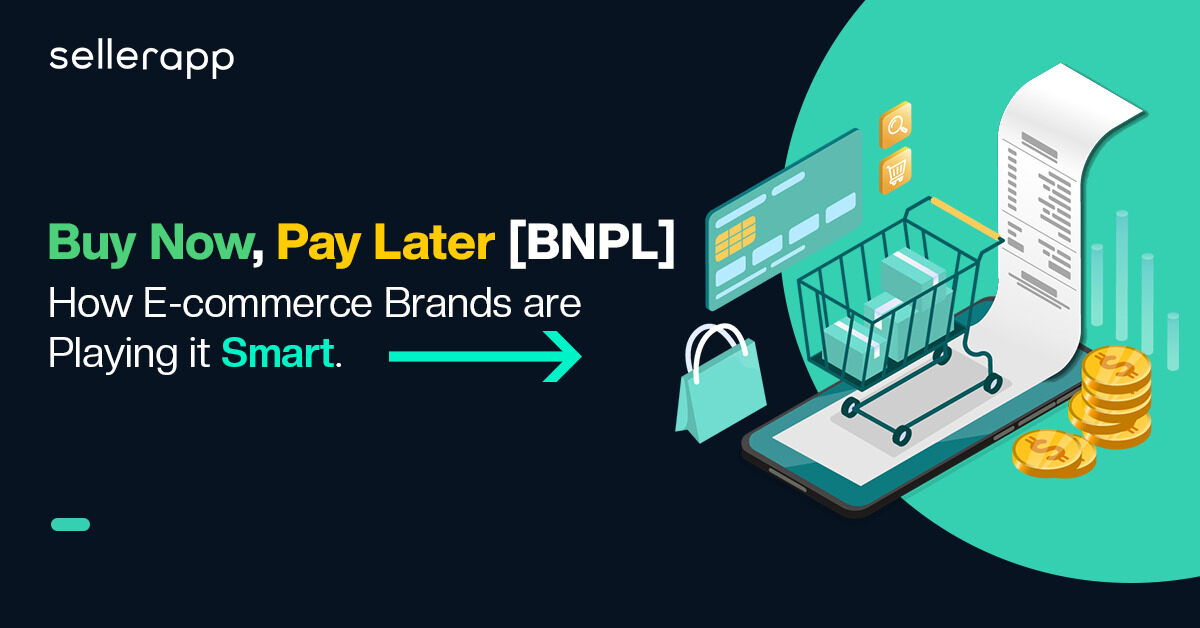Retail Media Networks: A Complete Guide for Brands and Sellers

As the e-commerce industry grows rapidly, more people are shopping online.
This shift in consumer behaviour also shapes how brands advertise their products online.
In the middle of this, retail media networks have emerged as the driving force, redefining how brands promote their products and connect with the end customers.
However, there are still a lot of sellers and advertisers who don’t know what retail media exactly is.
This blog will explore what a retail media network is and how it can help you grow your business.
A quick peek into the article:
- What is a Retail Media Network?
- How Does Retail Media Work?
- Benefits of Retail Media Networks
- What Are The Types of Retail Media Ads?
- Top Retail Media Networks in 2024
- Retail Media Networks Trends
- Final Thoughts
What is a Retail Media Network?
A retail media network works by allowing retailers to offer third-party brands ad space on their digital channels.
As e-commerce shopping continues to rise, the retail media landscape is expanding.
According to a report from Insider Intelligence, US advertisers are projected to allocate close to $30 billion toward retail media search ads by 2023 – accounting for more than 27% of the total spending on search ads.
Furthermore, this expenditure is expected to double by 2025.
Interestingly, Amazon alone contributes to 21% of this advertising expenditure.
These statistics showcase the tremendous opportunity advertisers have on Amazon. Through the platform’s extensive reach, brands can reach their target audience precisely when they are ready to buy.
How Does Retail Media Work?
A retail media network works by allowing retailers to sell ad space on their digital channels to third-party brands.
Brands collaborate with the retail media network to create ad campaigns and select the audience they want to target.
The network then collects customer data from the retailer to create audience segments and deliver highly targeted ads.
Advertisers can strategically place ads on retailer platforms to reach a wide audience, target specific product categories, or appear in search results.
The network also provides analytics and reporting tools to track the performance of ad campaigns.
It’s a win-win situation for both retailers and the network. Retailers benefit from additional revenue streams, while the network earns a commission to facilitate advertising transactions.
Overall, a retail media network allows brands to advertise where consumers are already spending their time and provides insights that can improve marketing strategies.
Benefits of Retail Media Networks
Retail media networks significantly impacted all stakeholders in the eCommerce industry.
For Amazon sellers, it provides a new source of advertising, which is particularly valuable given the declining profit margins in the consumer packaged goods (CPG) sector.
For consumers, this translates to more consistent and lower prices – as retailers strive to avoid sudden price increases that could negatively impact conversion and advertising revenue.
Furthermore, these highly targeted advertisements tend to be more relevant and less intrusive.
Retail media is also changing the dynamics between shoppers and brands. Although it may take some time for brands to adjust to this paradigm shift, investing in retail media is well worth it due to its unique advantages.
Here are some of them:
In-depth Data
Retail media networks can collect first-party data directly from their platforms, unlike third-party cookies, which are being phased out by internet browsers. This data is more reliable and future-proof.
The type of data collected by retail media networks can vary significantly. If the network you choose has a loyalty program, you may have access to detailed and insightful information about shoppers. You can use this information to target and customize your ads to maximize their impact.
eMarketer studies show that 62% of CPG brands choose retail media networks because of their rich datasets. However, it’s not just CPG brands leveraging the power of retail media networks. A recent study by McKinsey found that 75% of non-CPG advertisers plan to spend more on retail media networks in the future.
Hyper-Personalization
Hyper-personalization in retail media goes beyond just customizing messages to increase sales and improve ROI. It also offers the opportunity to personalize their offers and messaging to appeal to different audience segments.
Walmart Connect is an excellent example of that. Advertisers can target their customers based on their shopping behaviour, location, and so on. Brands can get better engagement and conversion rates with highly personalized ads.
Retail media networks also let brands send customers enticing offers, coupons, and highly relevant email promotions. Personalized products not only attract new customers but also introduce current users to new products, fostering growth and brand loyalty.
Show Ads at the Correct Times
Retail media networks help you reach your prospects when they are most likely to buy. These people browse the marketplaces looking for a product to buy. If your product ad catches their attention during this phase, they’ll convert easily.
Retail media ads are designed to look enticing and eye-catching on the website. They can help you increase your brand awareness and visibility on the digital shelf.
Easy Conversation Analysis
In a retail media network like Amazon or Walmart, ad impressions and sales take place on the same platform. They can also attribute the sales to the specific ads, campaigns, or channels that drove them.
This provides clear ROI insights and allows you to invest more in high-performing ad strategies that boost your bottom line the most.
What Are The Types of Retail Media Ads?
Retail media ads can be classified into three main categories:
On-site
On-site ads appear on the retailer’s platform, such as Amazon or Walmart. They can be display ads or search ads that show relevant products or services to the shoppers.
Off-site
Off-site ads use the retailer’s data display ads on other platforms through retail media partnerships. They can help reach more potential customers and drive them back to the retailer’s site.
In-store
In-store ads are those that are shown within the physical stores of the retailers. They can be digital or traditional ads that enhance the shopping experience and influence purchase decisions.
Top Retail Media Networks in 2024
In 2023, the retail media landscape is expected to be more competitive than ever as more retailers launch or expand their own media networks to capture a share of the growing e-commerce ad spend.
Here are some of the top retail media networks in 2024 based on their reach, capabilities, and innovation.
Amazon:
Amazon is the undisputed leader of the retail media market, with over 200 million monthly active shoppers in the US alone. Amazon offers a variety of ad formats and solutions across its properties, including sponsored products, sponsored brands, sponsored displays, video ads, audio ads, and Amazon DSP.
eBay:
eBay is another major player in the retail media space, with over 180 million buyers and sellers. eBay offers a range of ad solutions for brands and agencies, including promoted listings, display ads, video ads, native ads, and eBay Partner Network. eBay also provides advertisers with access to its first-party data and analytics tools to optimize their performance.
Criteo:
Criteo is a leading advertising platform specializing in retargeting and dynamic creative optimization. Criteo works with over 20,000 retailers and brands worldwide to deliver personalized and relevant web, mobile, and connected TV ads.
Walmart:
Walmart is one of the largest retailers in the world, with over 11,000 stores and a growing online presence. Walmart launched its own retail media network in 2019, called Walmart Connect.
Walmart Connect allows advertisers to reach millions of shoppers across Walmart’s online and offline channels, including Walmart.com, Walmart app, Walmart+, Walmart stores, Vudu, and Roku. Walmart Connect also leverages Walmart’s first-party data and advanced analytics to help advertisers target and measure their campaigns.
Wayfair:
Wayfair is one of the leading online retailers of home goods and furniture, with over 20 million active customers in the US. Wayfair launched its own retail media network, called Wayfair Media Solutions.
Wayfair Media Solutions allows advertisers to reach home shoppers with display ads, sponsored products, video ads, native ads, and email ads across Wayfair’s sites and apps. Wayfair Media Solutions also uses Wayfair’s proprietary data and algorithms to deliver personalized and relevant ads to shoppers.
Home Depot:
Home Depot is the largest home improvement retailer in the US, with over 2,200 stores and a robust e-commerce platform. Home Depot launched its own retail media network in 2020, called Home Depot Media Network. Home Depot Media Network enables advertisers to reach DIYers and professionals with display ads, sponsored products, video ads, native ads, and email ads across Home Depot’s sites and apps.
There are countless other retail media networks in the market, such as Instacart, ePRICE, Roundel, CitrusAd, The Trade Desk, CVS Media Exchange, Walgreens Advertising Group, Best Buy Ads, etc.
Retail Media Networks Trends
Here are some of the key trends that are shaping the retail media landscape in 2023:
The fragmentation of publishers is a challenge for retail media
As more retailers enter the retail media space, brands face a fragmented and complex ecosystem of publishers, each with its formats, metrics, and capabilities.
Moreover, according to Merkle, a new retail media network emerges every month for one to two months.
This makes it harder for brands to plan, execute, and measure their campaigns across different platforms and channels.
The fragmentation problem is getting out of hand, no matter if you use a third-party platform or do it yourself by hand.
To overcome this challenge, brands need to adopt a holistic and integrated approach – use tools and partner with solutions like SellerApp to help them decipher their data, optimize their bidding strategies, and streamline their reporting.
Rapid growth demands increased regulations.
By 2026, the retail media market is expected to grow by 25% per year and reach $100 billion, according to Boston Consulting Group.
It means retail media will attract regulators’, consumers, and industry associations’ attention in the coming years.
Retailers and brands need to prepare for changes in privacy laws, data governance, industry standards, and increased consumer awareness and expectations. In addition, brands have to invest in educating and training their team members to navigate the evolving retail media landscape.
Amazon Attribution is going to get big
Retail media has enabled brands to market to shoppers on multiple platforms, which was previously impossible.
However, with ads running on multiple platforms, it has been increasingly difficult to measure the impact of these ads.
Amazon Attribution allows brands to measure the impact of these non-Amazon ads on sales. This information allows brands to create better strategies and expand their advertising efforts.
Amazon is also working to expand the features and availability of Amazon Attribution from the past years, making it more accessible for brands of all sizes and categories.
Success requires enhanced AI and automation
Artificial intelligence and automation have been the buzzwords of 2023. Retailers and brands are embracing these technologies to enhance the performance and efficiency of their campaigns.
AI can significantly improve campaign management for brands and advertisers. For instance, sellers can create AI automation rules to customize bids based on their business goals, customer preferences, and context.
SellerApp is a solution that can help you with that. It offers features like dayparting and smart AI automation to help sellers manage their advertising campaigns and profits on Amazon.
You can also use tools like ChatGPT to create unique ad copies for your products or Picsart to create professional product photographs quickly with AI.
Social commerce is going mainstream
Social commerce is becoming increasingly popular in recent years. According to a report by Accenture, social commerce is expected to grow three times faster than traditional e-commerce, reaching $1.2 trillion by 2025, up from $492 billion in 2021.
In the US, social commerce is projected to reach $107.17 billion by 2025.
Social media platforms like Instagram, TikTok, and Pinterest are also expanding their e-commerce capabilities, allowing users to discover, browse, and buy products directly from their feeds, showcasing the advantages of social media in connecting brands with customers.
Retailers and brands adopt influencer marketing to reach their target customers on these social media platforms to keep up with this trend.
With these social media platforms bringing your product closer to customers, brands should think about how to use them to learn more about their target audience and tailor their products even more.
Final Thoughts
2023 was a busy year for brands and advertisers in the retail media network, and 2024 will be no different.
Retail media networks offer brands better advertising opportunities, allowing them to sell more products — but can they handle this added complexity?
That’s where SellerApp comes in. SellerApp PPC experts have already helped big brands like Coca-Cola and Phillips create and manage their advertising strategies.
And we can do the same for your brand.
Schedule a call with us and explore how we can grow your bottom line with full-funnel advertising efforts.
Additional guide:
What is Amazon Product Localization?











Kingston
January 31, 2024Informative blog, Thank you for sharing!!
Clare Thomas
March 4, 2024Glad you liked the article.
Martin
January 31, 2024Thank you for the information. It helped a lot.
Clare Thomas
March 4, 2024Very happy to hear that.